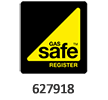Soap and water have many good uses, but cleaning dishes is not one of them. If you run a commercial food service operation whether it’s a restaurant, bakery, catering company, coffee shop or home-based retail business, you need some serious cleaning agents. Even office environments can benefit from upgraded dishwashing techniques to get coffee mugs clean and well sanitized.
When hand washing dishes, a three compartment sink is a must – and is also required by many health departments. The first sink is for hot sink and soapy detergent; the middle section should be filled with clean, hot water for rinsing; and the third sink is designed for sanitizing.
Of course, commercial dishwashers can also be used. Although employees should always follow the manufacturer’s instructions when operating the machine, generally commercial dishwashers sanitize through either a hot water rinse or a chemical spray rinse that typically uses bleach.
Since getting dishes clean is so important, here’s a checklist of steps business owners should take to protect their customers and let the quality of their food shine through:
Start with the right products. Look for a commercial grade cleaner that can be used for glasses, pots, pans, silverware and dishes. Products offered by janitorial supply companies, such as www.worldwidejanitor.com, are tailored-made for a variety of commercial settings, including hospitals, schools, offices, hotels, restaurants and homes. These are specifically formulated to make quick work of removing tough stains such as lipstick, coffee and tea. No customer wants to receive a “clean” coffee cup that has dark ring stains on the inside or a glass with a faint red lipstick imprint left behind by a previous patron.
When purchasing commercial dishwashing products, consider your operation. Some products come ready-to-use while others are concentrated, meaning they need to be pre-mixed with water according to the manufacturer’s suggested dilution ratio before use.
If employees will be hand washing dishes, purchase a quality detergent that can tackle greasy messes, but be gentle on hands. Employees who have to deal with cracked, chapped and dry hands won’t be happy employees and they may be hesitant about immersing their hands in dish water and scrubbing as long as they should.
Check frequently. Dish sinks can’t be filled at the beginning of the day and then used to wash dishes whenever needed. The water needs to be changed frequently so it is always clean and free of bacteria. Also, hot, soapy water is definitely a must at all times.
If using Quaternary Ammonium Compounds (Quats) or iodine for sanitizing, follow the directions on the label to the letter as using too much can leave a potentially harmful residue behind. Use professional test paper strips to check the concentration of the rinse solution as often as necessary.
Always air dry. Once the rinsing and sanitization process is complete, leave the dishes in a clean area with good air circulation. Never use towels or dishrags to wipe dishes dry as these can harbor potentially harmful bacteria.
Machine washing made simple. It sounds easy: Load dishes in dishwasher, add detergent and push a button to start. However, there is a rhyme and reason to dishwasher cleaning. First, scrape all food particles off the surface and pre-rinse. Load dishes in a manner so that they are not overcrowded and fill the detergent compartment with a dishwashing compound made specifically for commercial equipment. If desired, also include a rinse additive to prevent water spots when drying.
Don’t forget standing equipment. There is a popular television commercial that shows a customer bringing a mattress to a laundromat for cleaning. There’s awkward silence as the customer realizes that there is a different way to get a mattress clean and smelling fresh without immersing it in water. The same is true with various pieces of kitchen equipment, such as meat grinders and slicers. Follow manufacturer instructions for cleaning so all crevices are properly sanitized.
Stay safe. Keep all dishwashing supplies in their original containers with the directions clearly visible. Store them on a bottom shelf away from all food and food prep areas. Train employees on the proper dishwashing procedure and clearly spell out your expectations that they follow directions at all times for their safety as well that of your customers.



